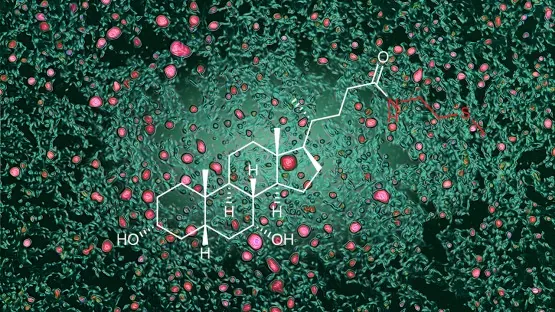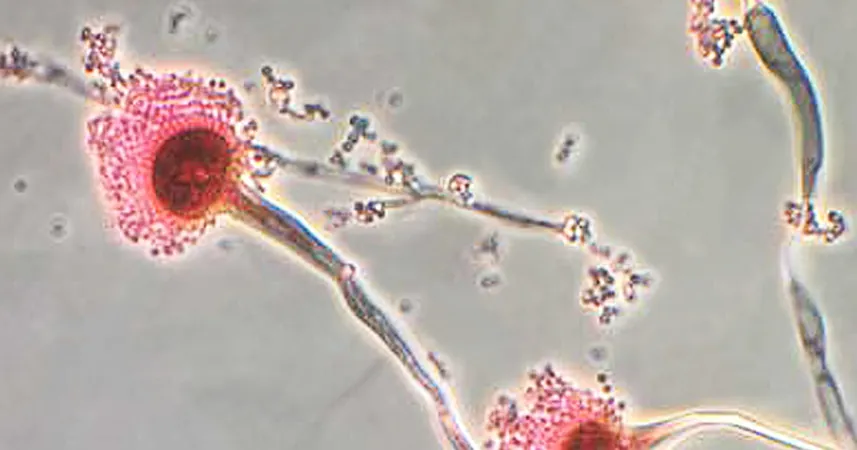
Discover the Groundbreaking Connection Between Gut Microbes and Body Fat Regulation!
2025-01-13
Author: Li
Groundbreaking Research Unveiled
Recent groundbreaking research from Weill Cornell Medicine and the Boyce Thompson Institute has unveiled a crucial link between beneficial gut microbes and the regulation of body fat and cholesterol levels. The study, published on January 8 in the prestigious journal *Nature*, highlights the sophisticated communication between our gut microbiota and bodily functions that orchestrate fat metabolism.
The Human-Microbiota Relationship
Humans have co-evolved alongside their gut microbiota, forming cooperative relationships that enhance our digestion and the absorption of essential nutrients. Central to this partnership is the production of bioactive molecules such as bile acids, which are synthesized from cholesterol in the liver. These bile acids travel to the intestine, where they play a significant role in breaking down fats, making them easier for the body to utilize.
The Twist in Bile Acid Research
Previous research showed that gut bacteria transform bile acids into forms that activate a receptor known as FXR, which consequently reduces bile production. However, this latest study reveals a fascinating twist: an enzyme from intestinal cells converts bile acids into a new form, bile acid-methylcysteamine (BA–MCY), which counteracts FXR activation. This process encourages the production of bile, thereby enhancing fat metabolism.
The Importance of Microbial Dialogue
Co-corresponding author David Artis expressed the essential nature of this microbial dialogue, stating, “Our study reveals there is a dialogue occurring between the gut microbes and the body that is vital for regulating bile acid production.” This groundbreaking communication is crucial not just for digestion but for overall metabolic health.
Innovative Research Approaches
The collaborative research team, which includes Dr. Tae Hyung Won, Dr. Christopher Parkhurst, and Mohammad Arifuzzaman, employed untargeted metabolomics to differentiate between molecules produced by gut microbes and those synthesized by the host’s body. Their findings illuminated how BA-MCY is heavily influenced by microbial presence yet produced endogenously.
The New Paradigm of BA-MCYs
“The BA-MCYs demonstrate a new paradigm: molecules that are not produced by the gut microbes but are still dependent on their presence,” Dr. Won noted. This balancing act ensures that when bacteria produce excess bile acids that overly activate FXR, the body responds by generating BA-MCYs, maintaining equilibrium in bile metabolism.
Implications for Liver Health
The researchers also uncovered compelling evidence that higher BA-MCY levels correlate with reduced fat accumulation in the liver. Furthermore, they found that increasing dietary fiber consumption significantly elevated BA-MCY production. Intriguingly, they discovered BA-MCYs in human blood samples, suggesting that these mechanisms could be applicable to human health as well.
Broader Health Implications
The broader implications of this research are profound. As the interplay between gut microbiota and host metabolism sheds light on various diseases, including obesity, chronic inflammation, and even cancer, it opens the door for innovative approaches to health and disease management through dietary interventions and microbiome-targeted therapies.
Future Directions and Conclusion
“Ultimately, our paper serves as a roadmap for understanding how the complex interplay between gut microbes and the body affects a multitude of diseases,” Artis concluded. This enlightening study propels forward our understanding of metabolism and sets the stage for future research aimed at harnessing the gut microbiome for better health outcomes.
This revolutionary finding is just the beginning of a new era in nutritional science and metabolic research. Are you ready to unlock the secrets of gut health for a healthier life? Stay tuned for more exciting discoveries!





 Brasil (PT)
Brasil (PT)
 Canada (EN)
Canada (EN)
 Chile (ES)
Chile (ES)
 Česko (CS)
Česko (CS)
 대한민국 (KO)
대한민국 (KO)
 España (ES)
España (ES)
 France (FR)
France (FR)
 Hong Kong (EN)
Hong Kong (EN)
 Italia (IT)
Italia (IT)
 日本 (JA)
日本 (JA)
 Magyarország (HU)
Magyarország (HU)
 Norge (NO)
Norge (NO)
 Polska (PL)
Polska (PL)
 Schweiz (DE)
Schweiz (DE)
 Singapore (EN)
Singapore (EN)
 Sverige (SV)
Sverige (SV)
 Suomi (FI)
Suomi (FI)
 Türkiye (TR)
Türkiye (TR)
 الإمارات العربية المتحدة (AR)
الإمارات العربية المتحدة (AR)